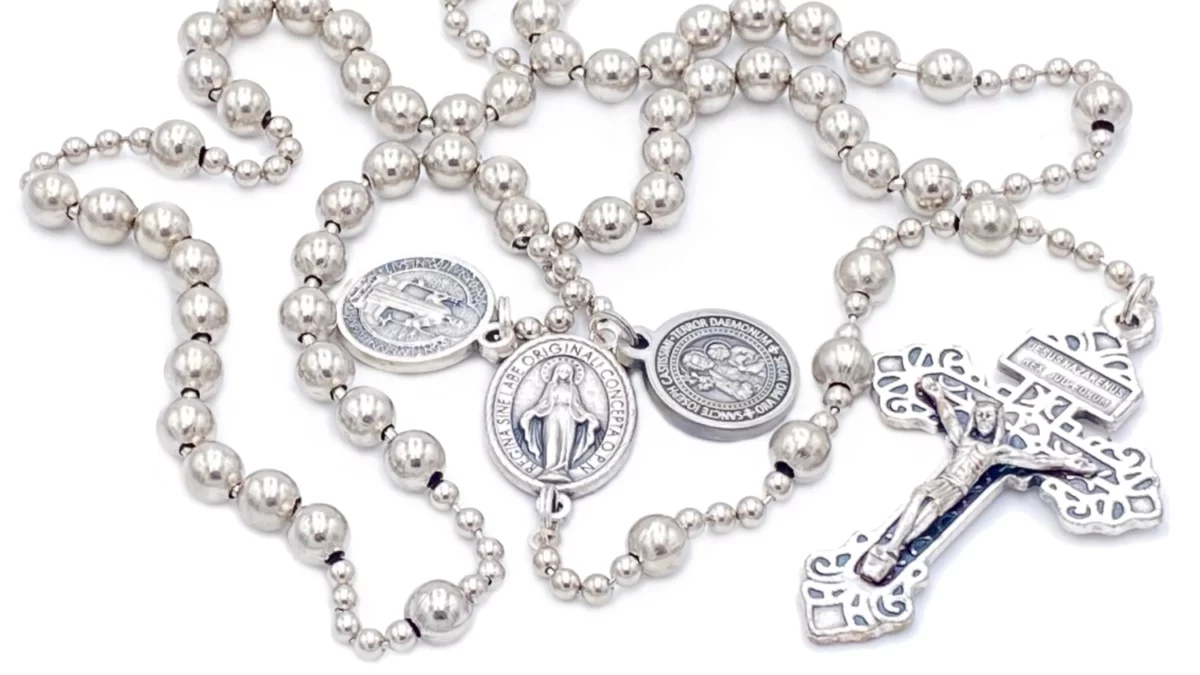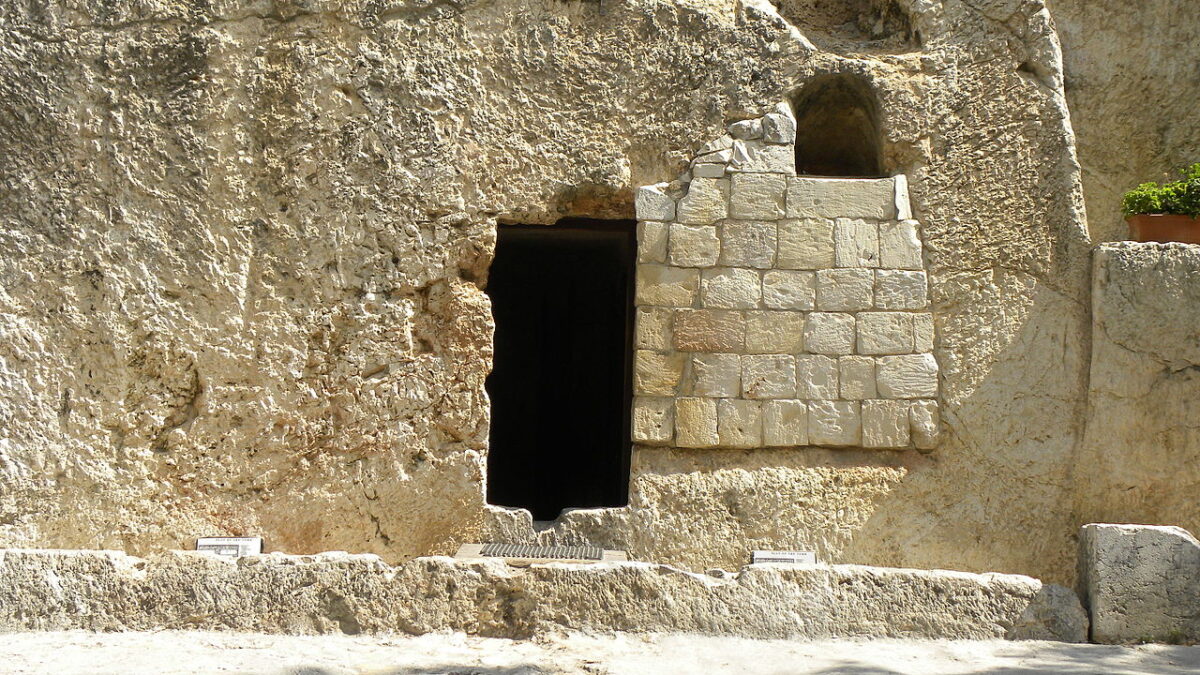Cable news anger, Catholic umbrage, internet mockery, and even a host of memes — these are just some of the reactions to The Atlantic’s article calling Catholic rosary beads “an extremist symbol” now being used as “a weapon” by “radical-traditional Catholics.”
The backlash was so widespread, Atlantic editors moved to change the headline, alter the subheadline, and even delete the bullet-hole image they’d commissioned for the piece, replacing it with a simple Getty picture of the Catholic prayer beads. (Though none of these updates were noted by any editor’s note; a practice that’s in line with their editorial standards these days.)
Here’s the strange thing, however: The Atlantic’s boy-author is right.
Sure, he’s wrong on plenty; and yes, both he and his editors demonstrate a complete inability to perceive the truth of the rosary. But in their secular attempt to fit an 800-year-old devotion into the framing of their ultra-modern and secular politics, they’ve stumbled onto the truth, tripping over it like a bedstand in the dark. They can’t quite grasp what they’ve hit and they know they don’t like it — but they can feel it’s there.
The rosary cuts a striking image in the eyes of the modern world; you don’t even need to know how to pray it to understand this. Men who haven’t seen the inside of a church in years have it tattooed on their chests. Gang-bangers can be seen wearing it around their necks. For them, the rosary is less a Marian devotion and more a symbol of connection to their culture and their past — the religion and the ways of their grandparents, maybe.
For those who understand it, however, the rosary is so much more: a fervent meditation on ancient mysteries, from the joyful to the sorrowful, and from the illuminous to the glorious. In the world we can see and touch, they can provide a means to calm the mind, and to place people, things, and events in their rightful place.
And in a world that calls sex love, puts money over people, vandalizes churches, firebombs pregnancy clinics, aborts children, harasses priests, arrests pastors, fires and demonizes Christians, mocks God, and celebrates public pride in deadly sins, the rosary is indeed extremist — a rejection of a fallen society and the ugliness it wallows in.
The rosary is indeed a weapon, too. Since ancient times, we’ve believed we must “put on the armor of God,” and that, “our struggle is not with flesh and blood but with the principalities, with the powers, with the world rulers of this present darkness, with the evil spirits in the heavens.”
Catholic men as battle-hardened as St. Padre Pio and as gentle as Pope Francis have reaffirmed this. But although The Atlantic admits some knowledge of the long-held Catholic belief, it’s aghast at certain aspects of it. In one paragraph, for example, the author complains of the “gun-metal-finish” on “Combat Rosaries.”
What are Combat Rosaries? They’re prayer beads designed by Wisconsin priest Fr. Rick Heilman. In a post on his site, Heilman describes his frustration with the delicate and effeminate nature of most rosaries, and how he designed his Combat Rosaries as an homage to those that France and the United States provided to Catholic soldiers during the First World War.
“Men’s faith formation has been a pet project of mine for the last half of my 26 years as a priest,” he writes. “Among many things, I’ve wanted us men to rediscover the treasury of Catholic devotions.”
This was a little too masculine for The Atlantic, it seems, which also took issue with the use of “Church Militant” — an early Catholic term used to describe those faithful still living (as opposed to in Purgatory or Heaven). It was the Church Militant’s duty to wrestle “not against flesh and blood; but against principalities and power, against the rulers of the world of this darkness, against the spirits of wickedness in the high places.”
Toward that purpose, the commander of the Vatican Swiss Guard called these rosaries “the most powerful weapon that exists on the market.” Of course, concepts like evil, demons, masculinity, and religion make modern, secular liberals deeply uncomfortable. Add conservative internet memes to the mix, and you’ve got a full-blown meltdown.
Religious concepts such as these seem radical (and the only radicals The Atlantic can stomach are those who firebomb Christians) — and that’s because they are. But is that so bad?
The word “radical” stems from the Latin word “radix,” or “root.” When we turn to a beautiful, 800-year-old meditation, we’re returning to the roots of our faith. When we understand the nature of the enemy and the weapons we have to defeat him, we’re returning to the roots of our faith. When we rediscover the truth of our faithful ancestors’ devotion — one we’d previously merely grasped toward in our tattoos and our jewelry — we’re returning to the roots of our faith.
By the standards of this world, the holy rosaries are extreme; they’re a weapon; and they’re radical. We live in a fallen world and have since leaving Eden. The rosaries today, just as in medieval times, are an explicit rejection of the sins of our culture, the sins that surround us.
When you take an honest stand against a fallen world, don’t be surprised if that world doesn’t embrace you, or even accuses you.
“Jesus said to his disciples: ‘I have come to set the earth on fire, and how I wish it were already blazing! There is a baptism with which I must be baptized, and how great is my anguish until it is accomplished! Do you think that I have come to establish peace on the earth? No, I tell you, but rather division. From now on a household of five will be divided, three against two and two against three; a father will be divided against his son and a son against his father, a mother against her daughter and a daughter against her mother, a mother-in-law against her daughter-in-law and a daughter-in-law against her mother-in-law.'”
So while The Atlantic is right, they don’t understand what they’ve stumbled over. We, on the other hand, must understand the battle we’re in — and the weapons we have. The faithful don’t have the luxury of ignorance.









